
National Satellite Test Facility (NSTF)
The National Satellite Test Facility at Te Pūnaha Ātea Space Institute offers full end-to-end testing capability to support activities from concept
development to qualification to acceptance of hardware for space and other applications, to troubleshooting, for internal university (R&D and education) and external companies.
Our facility can handle hardware up to 50 kg and with 0.5m x 0.5m x 0.5m volume and tests compliant with relevant standards – NASA, ESA etc. (Note that heavier items can be tested, with achieved accelerations levels depending on the mass of the item)
The National Satellite Test Facility is now operational and we actively invite general enquiries and requests to use the facilities.
See The Installation of the 3D Shaker (19 to 29 of March 2022)
- Vibration testing – Shaker & slip table combo system for standard one axis at a time testing & state-of-the-art multi axis testing for simultaneous 3D vibration testing.
- Swept sine, random, Resonance search and Dwell, Time Waveform Replication, Combined Random + Sine
- 16 Digital Input/output Channels each with ICP sensor power, 24-bit
- Frequency range 5 – 3000Hz
- Max force (sine/rand.) 20kN
- Max force (shock) 40kN
- Max acceleration 100g
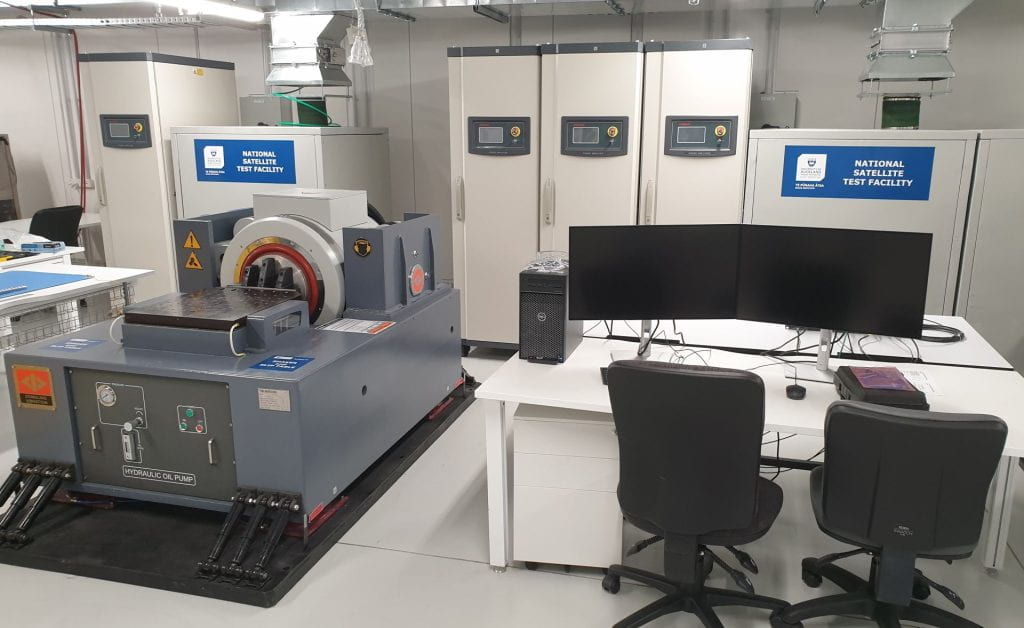
- Mechanical Shock testing – Resonant plate & shaker, Shock Pulse & Shock Response Spectrum
- Two areas of 430mm x 1160mm for test articles.
- Horizontal and vertical shock impact configurations
- Triaxial and uniaxial accelerometers for SRS data acquisition
- Test object mass limits <50kg
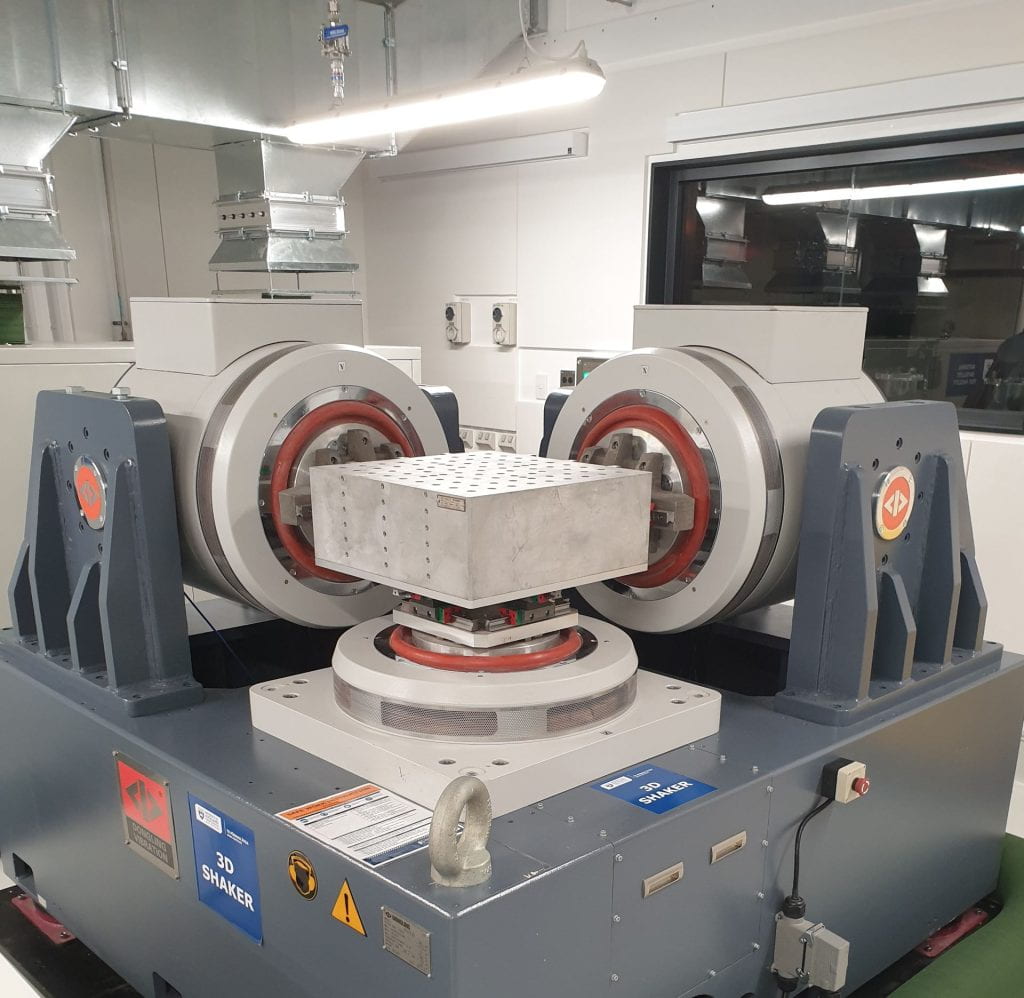
- Thermal Vacuum Testing
- 1.2m diameter Pfeiffer chamber
- Temperature controlled roll out platen breadboard and shroud (single circuit)
- 900x600mm platen
- Specified to -40degC to +70degC
- Wider temperature range expected to be achievable
- Two stage pumping to achieve ultimate pressure <10-5 Torr
- D-sub, Ethernet and USB feedthroughs available, with spare ports for other options
- View port internal webcam available
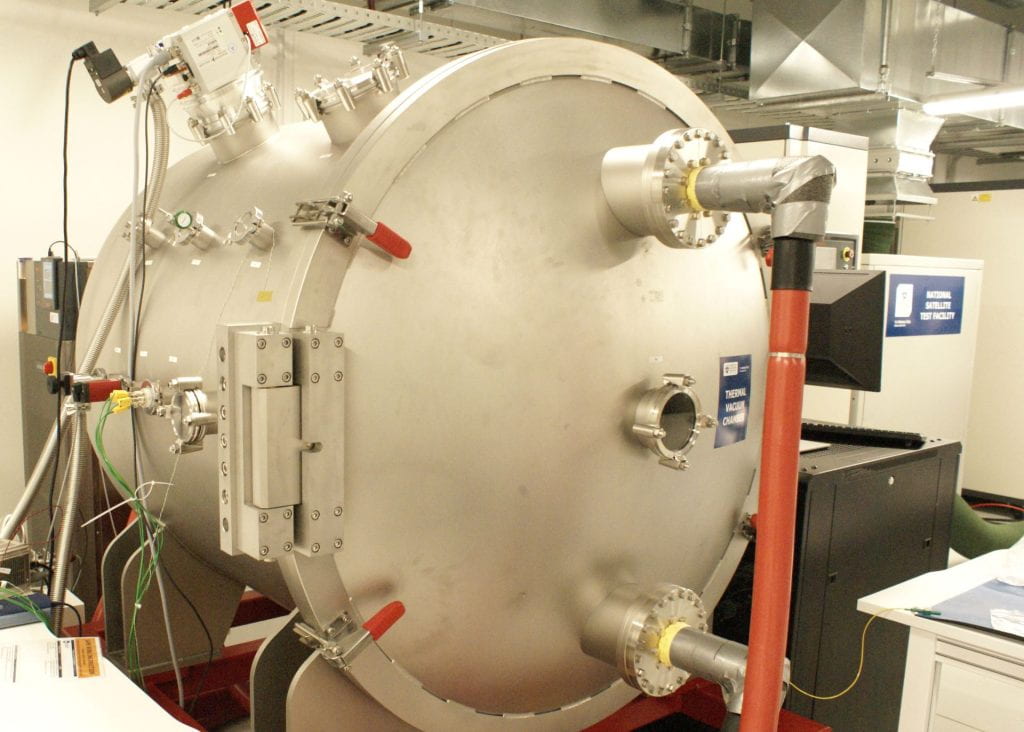
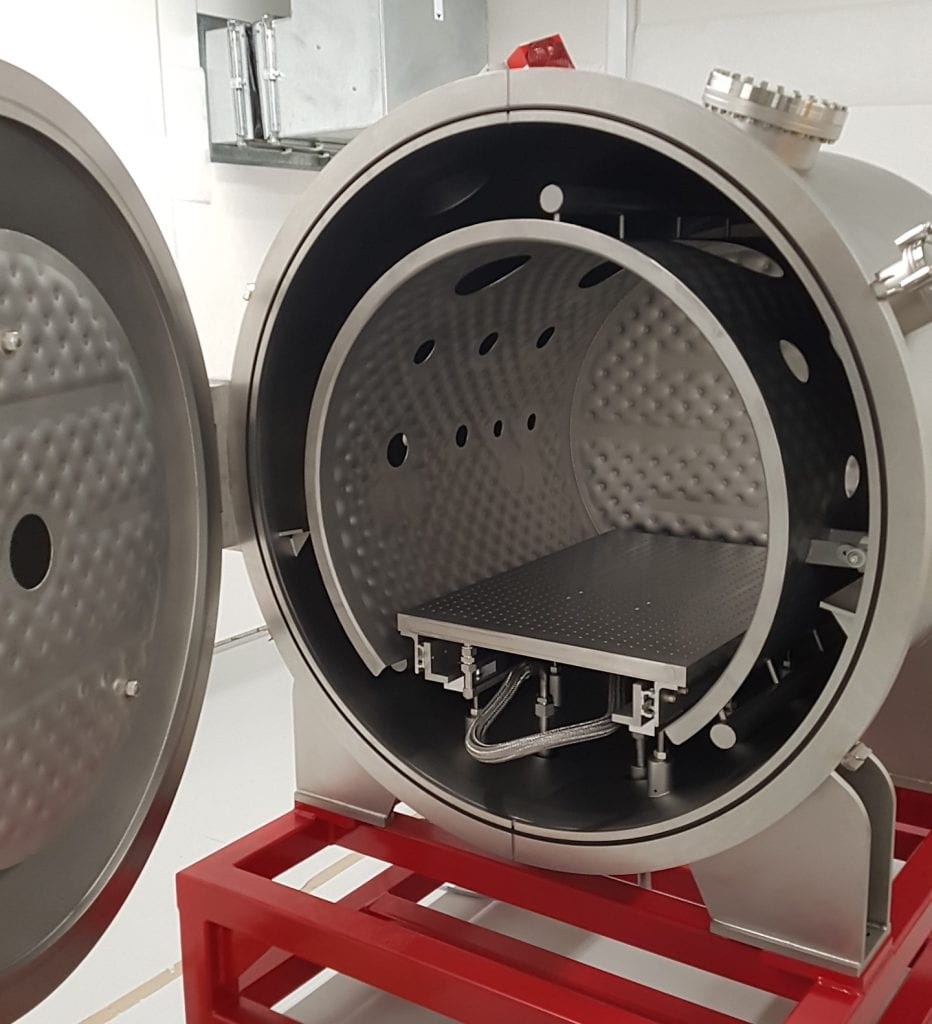
Additional Services
Development of lightweight structures and mechanisms
The requirements for space structures are very high, because space missions are extremely expensive, complex and challenging. Furthermore, any failure can have catastrophic consequences. Therefore, space structures are optimized to their extremes and undergo rigorous testing. Te Pūnaha Ātea – Space Institute experiences gained from space missions can help you in your product development. Contact us to see how we may be able to offer support.
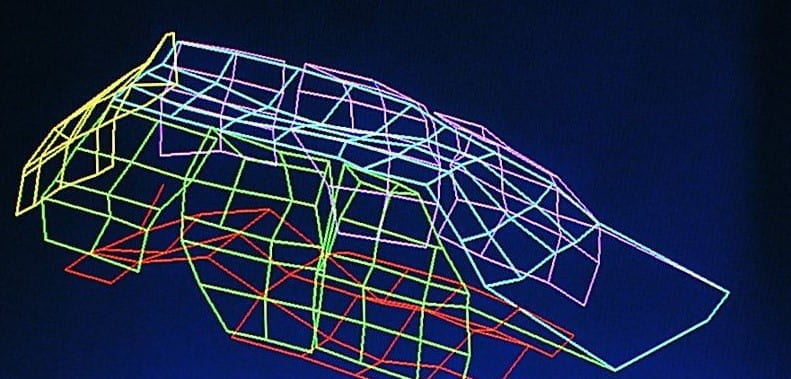
Qualification and Quality Testing
Natural frequencies depend on little details of the structure. Therefore, the measurement of natural frequencies enables often a very fast and reliable way for qualification or quality tests. Ask our experts!

Contact Us
Fill in the form below or send an email to l.sabardin@auckland.ac.nz